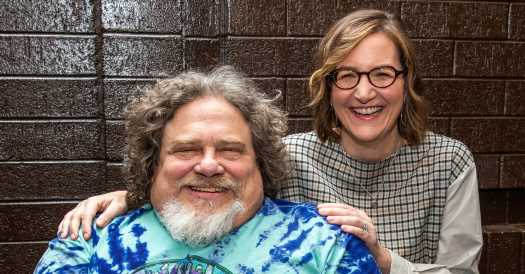The foundations are adding $5 million to the Disability Futures program, which will continue through 2025 with two more classes of 20 fellows each.


By Sarah Bahr
The Disability Futures initiative, a fellowship established by the Ford and Andrew W. Mellon Foundations last fall to support disabled artists, is expanding. The foundations announced on Friday that they will commit an additional $5 million to support the initiative through 2025, which will include support for two more cohorts of 20 fellows.
The fellowship, which was created by and for disabled individuals, was conceived as an 18-month initiative. It provided 20 disabled artists, filmmakers and journalists, selected from across the United States, with unrestricted $50,000 grants administered by the arts funding group United States Artists.
But Margaret Morton, the director of creativity and free expression at the Ford Foundation, said it was clear from the beginning that it couldn’t just be a one-off venture.
Projects undertaken by members of the first cohort will be showcased at the first Disability Futures virtual festival, on Monday and Tuesday, with programming from some of the country’s leading disabled artists, writers, thinkers and designers. It is free and open to the public.
Among the highlights: A session on disability portraiture with the filmmakers Jim LeBrecht and Rodney Evans, the painter Riva Lehrer and the journalist Alice Wong; a conversation exploring the connections between climate justice and disability justice led by Patty Berne; and a virtual dance party hosted by the garment maker Sky Cubacub, with music by DJ Who Girl (Kevin Gotkin). Evening runway performances from models wearing items from Cubacub’s Rebirth Garments and a meditation experience with the initiative Black Power Naps, featuring Navild Acosta and Fannie Sosa, are also on tap.
“It’s been really profound for me to see how much the fellows chosen in the first cohort were interested in elevating others in the community,” Emil J. Kang, the program director for arts and culture at the Mellon Foundation, said in an interview on Thursday.
The next class of fellows will be announced in 2022. They are chosen by peer advisers who are themselves disabled artists.
But the feedback from the first class, Morton said, was frank: Do even better in the selection process.
“One of the fellows challenged us,” she said, about there being only one Native American fellow. “And we appreciated that and were challenged to get it right and make sure we have a deeper pool.”
The grants offer flexible compensation options. The money can be distributed in a lump sum, in payments or even be deferred, depending on what works best for the artist.
The fellowship “has made an incredible difference in my life and career,” the writer and photographer Jen Deerinwater said in an email. “It’s allowed me more financial freedom, without the risk of losing my disability and health care services, to pursue more artistic pursuits such as music.”
The pandemic has made foundation leaders “deeply aware” of the challenges disabled professionals face, Morton said. About one in four adults in the United States has a disability, according to the Centers for Disease Control and Prevention.
“We gained a deeper impression and perspective about what it’s like to navigate through the world,” she said.
The program’s overarching goal is to help the artists make connections, Morton said.
“Our biggest dream is visibility,” she said. For audiences to see the artists and for funders to see that “they should start investing in disabled practitioners.”
Site Index
Site Information Navigation
Source: Read Full Article
